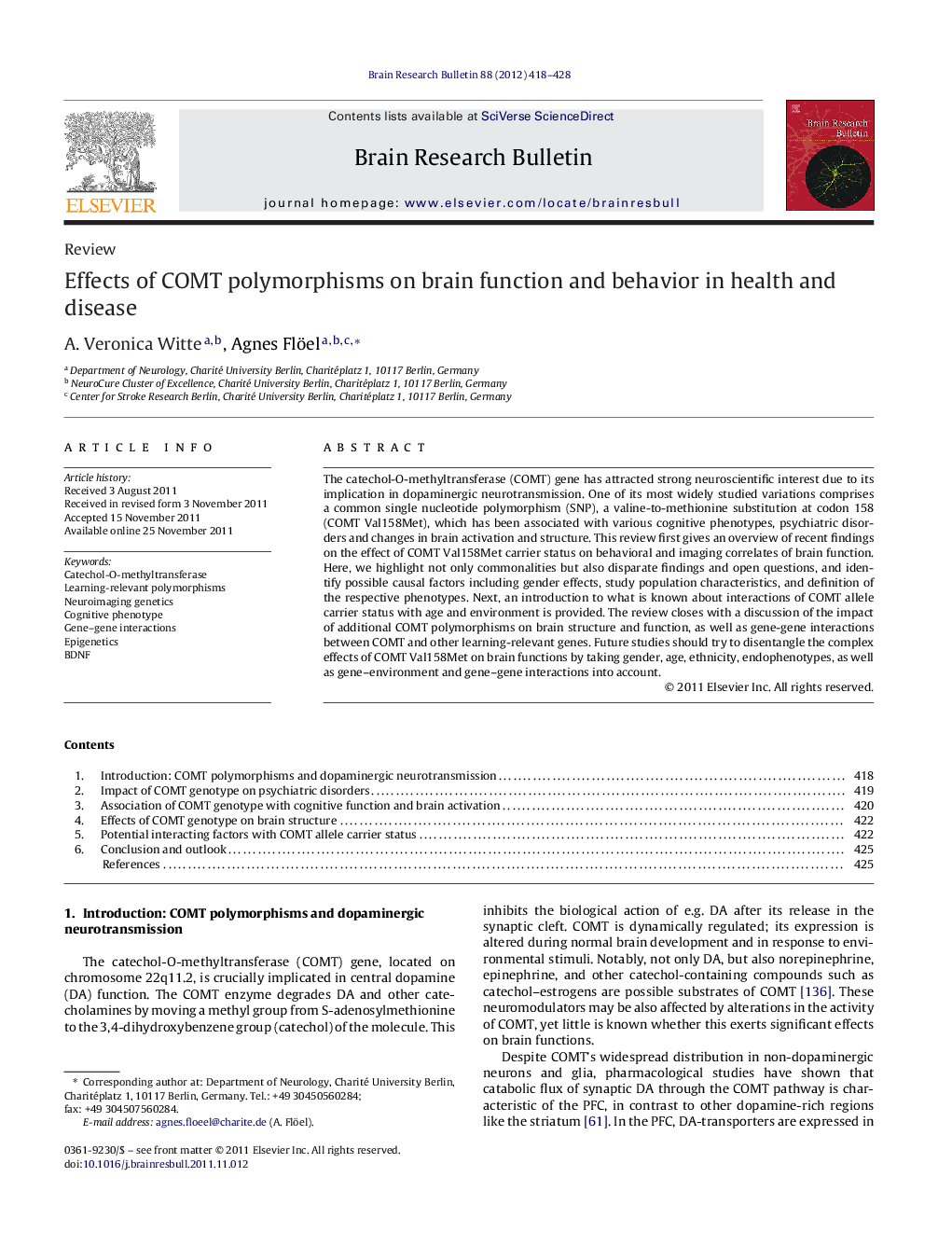| Article ID | Journal | Published Year | Pages | File Type |
|---|---|---|---|---|
| 4318980 | Brain Research Bulletin | 2012 | 11 Pages |
The catechol-O-methyltransferase (COMT) gene has attracted strong neuroscientific interest due to its implication in dopaminergic neurotransmission. One of its most widely studied variations comprises a common single nucleotide polymorphism (SNP), a valine-to-methionine substitution at codon 158 (COMT Val158Met), which has been associated with various cognitive phenotypes, psychiatric disorders and changes in brain activation and structure. This review first gives an overview of recent findings on the effect of COMT Val158Met carrier status on behavioral and imaging correlates of brain function. Here, we highlight not only commonalities but also disparate findings and open questions, and identify possible causal factors including gender effects, study population characteristics, and definition of the respective phenotypes. Next, an introduction to what is known about interactions of COMT allele carrier status with age and environment is provided. The review closes with a discussion of the impact of additional COMT polymorphisms on brain structure and function, as well as gene-gene interactions between COMT and other learning-relevant genes. Future studies should try to disentangle the complex effects of COMT Val158Met on brain functions by taking gender, age, ethnicity, endophenotypes, as well as gene–environment and gene–gene interactions into account.
► Common genetic polymorphisms in the COMT gene such as Val158Met modulate dopamine-related processes. ► Thus, they exert subtle influences on risk of psychiatric diseases, as well as brain structure, activation, and behavior. ► A large number of controversial issues persist though. ► Effects of age and gender are not well understood – U-shaped curve of optimal dopamine levels? ► Moreover, gene × gene interactions and epigenetic effects need to be further explored.
